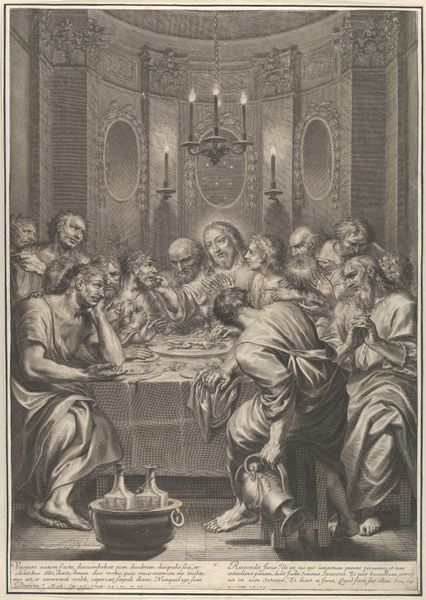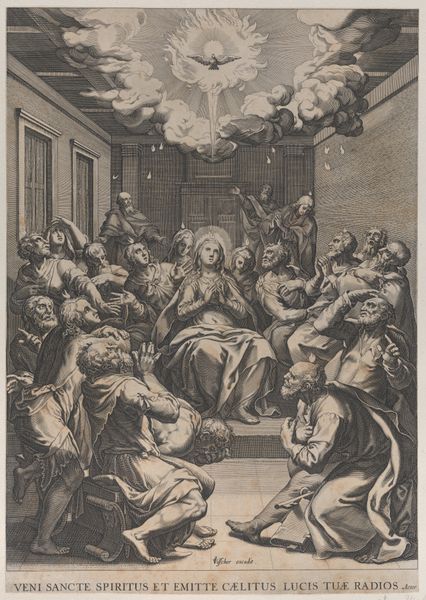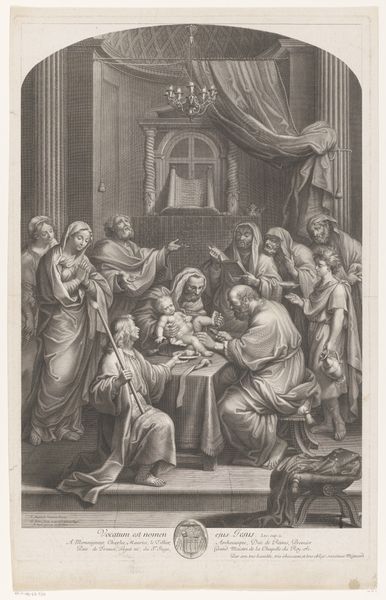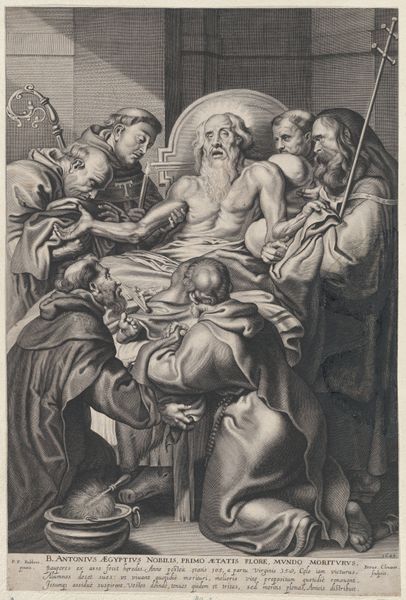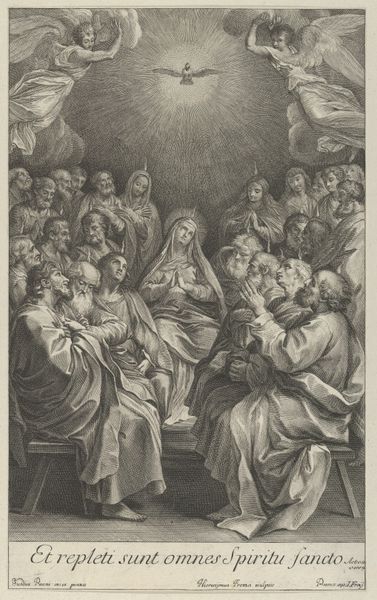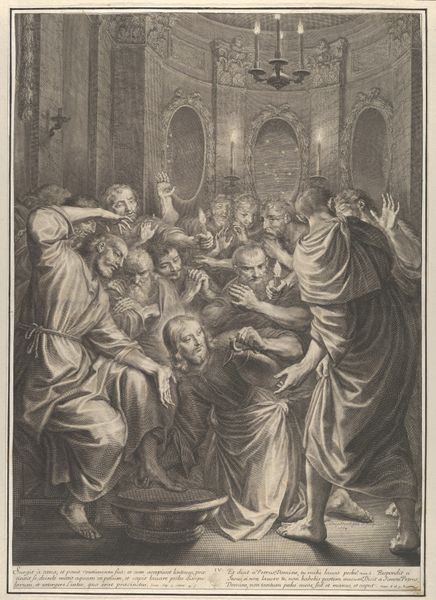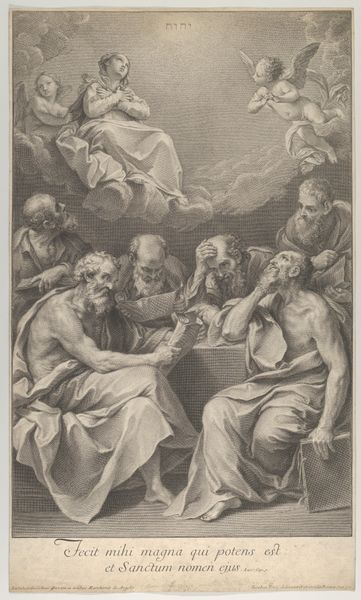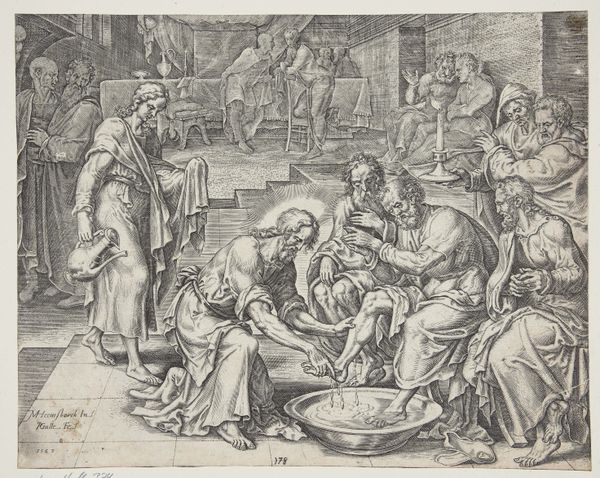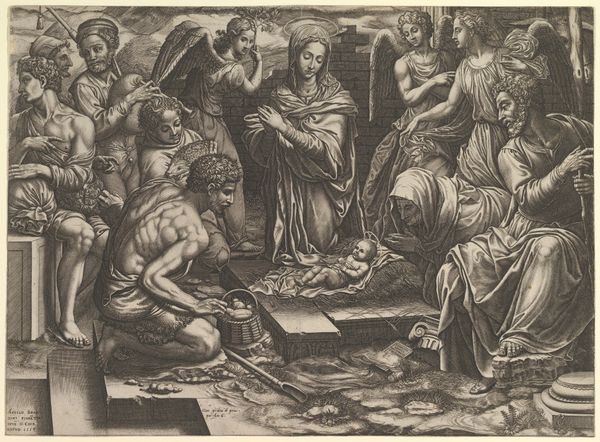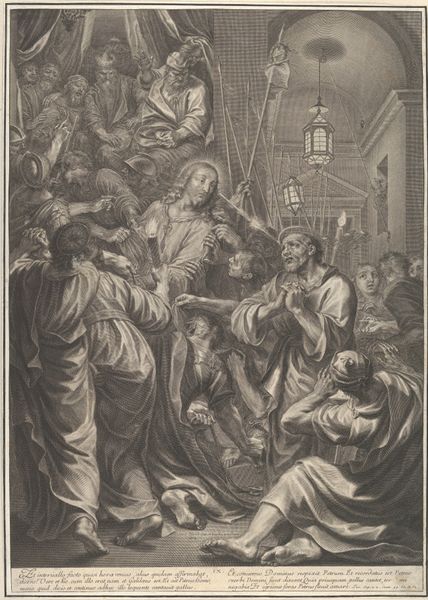
drawing, print, engraving
#
drawing
# print
#
11_renaissance
#
history-painting
#
engraving
#
christ
Dimensions: Sheet: 19 in. × 27 1/16 in. (48.3 × 68.8 cm)
Copyright: Public Domain
Curator: This engraving, attributed to Pierre Landry, titled *The Last Supper*, dates somewhere between 1630 and 1701. It now resides at the Metropolitan Museum of Art. Editor: It strikes me as an intensely interior scene. The faces are clustered so closely, it creates a palpable tension. Curator: Landry’s image draws from the established tradition of depicting the Last Supper, specifically capturing the moment Christ reveals that one of his disciples will betray him. Editor: And look at the light. It isn't naturalistic at all; Christ himself emanates this strange halo of illumination, drawing your eye immediately to him, separating him from the somewhat chaotic expressions around him. Curator: Engravings like these played a significant role in disseminating religious imagery throughout Europe, particularly during the Counter-Reformation. It enabled wider audiences to have access to interpretations of key biblical scenes. The effect can be assessed across broad populations. Editor: You can see that the emotional intensity of the scene has clearly been enhanced through the printmaking. Note how the dense, hatched lines add volume to the figures, but equally creates almost palpable psychological weight, contributing to that tension I felt initially. The formal properties amplify the moment of dramatic revelation. Curator: The historical context provides valuable information about understanding the function and distribution of visual culture and highlights how certain aesthetics, such as the High Baroque’s interest in the theatrical, informed sacred imagery. Editor: A convergence of form and dissemination. The image is potent, amplified through accessible means and by its careful composition, achieving quite the emotionally charged moment. Curator: Precisely. Its enduring impact stems from both Landry’s skilled manipulation of the engraving technique and its place within a broader historical movement. Editor: A stark contrast, indeed, between accessible media, formal excellence, and deeply affecting subject matter.
Comments
No comments
Be the first to comment and join the conversation on the ultimate creative platform.
